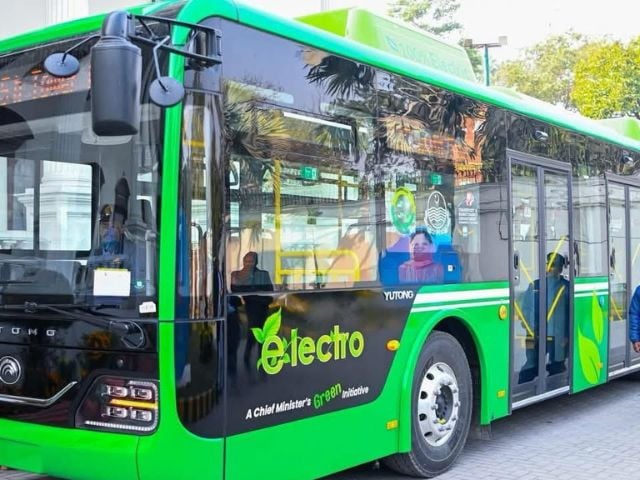In a groundbreaking effort to modernize public transport and tackle environmental challenges head-on, Punjab’s Chief Minister Maryam Nawaz Sharif has officially launched 240 electric buses across 24 districts in South Punjab. This initiative marks the first phase of a much larger and visionary rollout aimed at reshaping mobility across the province — with 600 electric buses expected to be fully operational by the end of 2025.
Designed to serve both rural communities and major urban centers, this transition to electric public transport is rooted in the idea of equal access, climate action, and development without discrimination. CM Maryam Nawaz emphasized the need to bring villages at par with cities, ensuring that every district — not just the big ones — benefits from modern infrastructure.
Following the current deployment, 500 more electric buses are scheduled for launch between August and October, targeting major cities like Lahore, Faisalabad, Multan, Bahawalpur, and Rawalpindi. A significant portion of this fleet — 400 buses — will also support the Punjab Clean Air Programme, focusing on high-impact areas such as Lahore, Kasur, Sheikhupura, and Nankana Sahib to improve urban air quality and reduce transport emissions.
This project is not just about cleaner vehicles; it’s about building a connected future. Punjab is also accelerating work on Bus Rapid Transit (BRT) systems, including a 22-kilometer stretch in Gujranwala with 28 stations and 80 feeder buses. In Faisalabad, the Red and Orange BRT Lines are being expanded to connect key industrial and commercial hubs, expected to serve nearly 300,000 commuters daily.
These efforts signal a shift in how public transport is planned — with data-driven routes, electric depots, and mobility justice at the heart of the strategy. From improving commute options to cutting down smog and supporting economic activity in underdeveloped regions, this electric bus initiative is a major milestone for sustainable governance in Pakistan.
As the wheels begin to turn, Punjab is sending a clear message: the future of transport is clean, connected, and for everyone.
